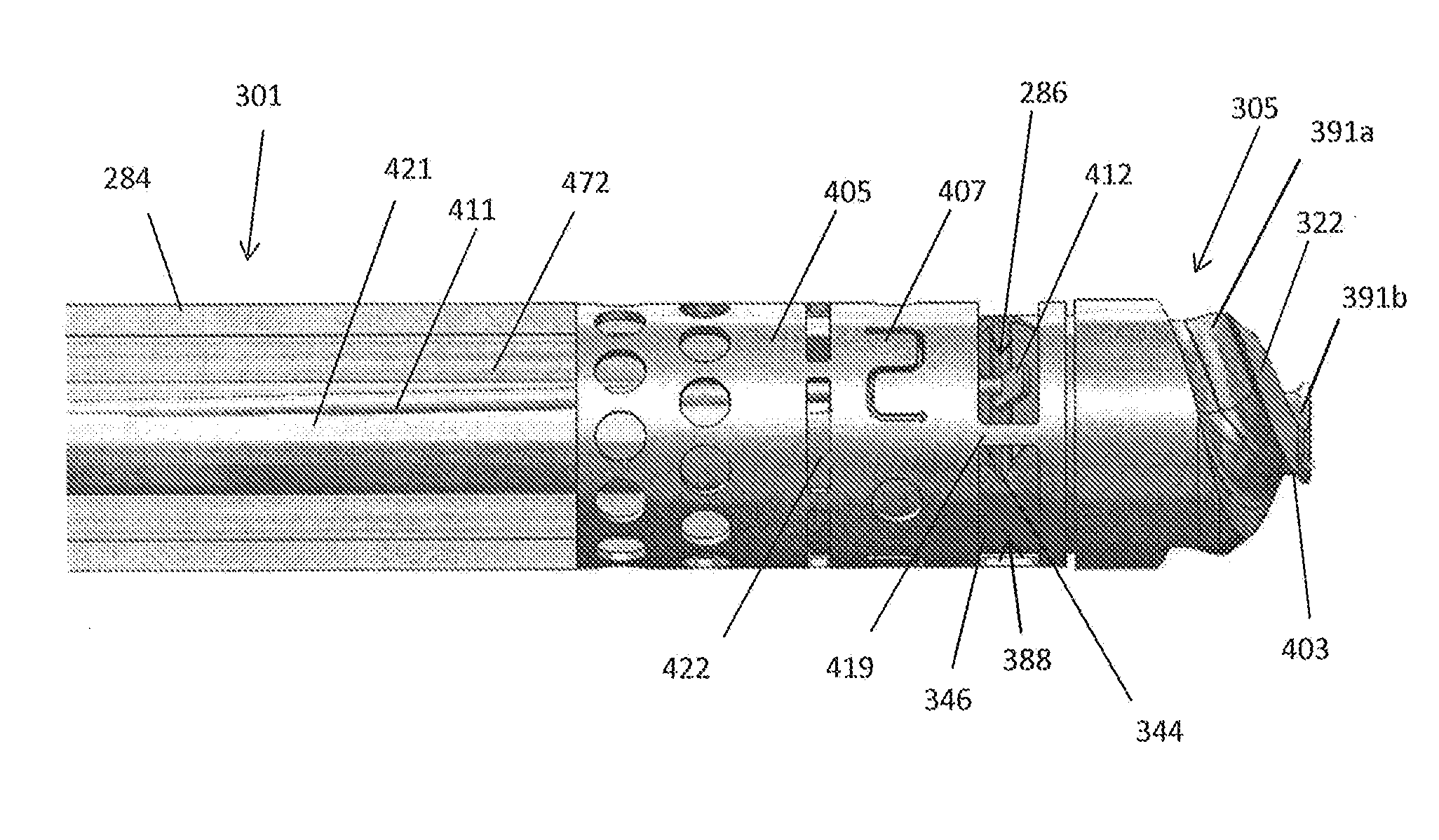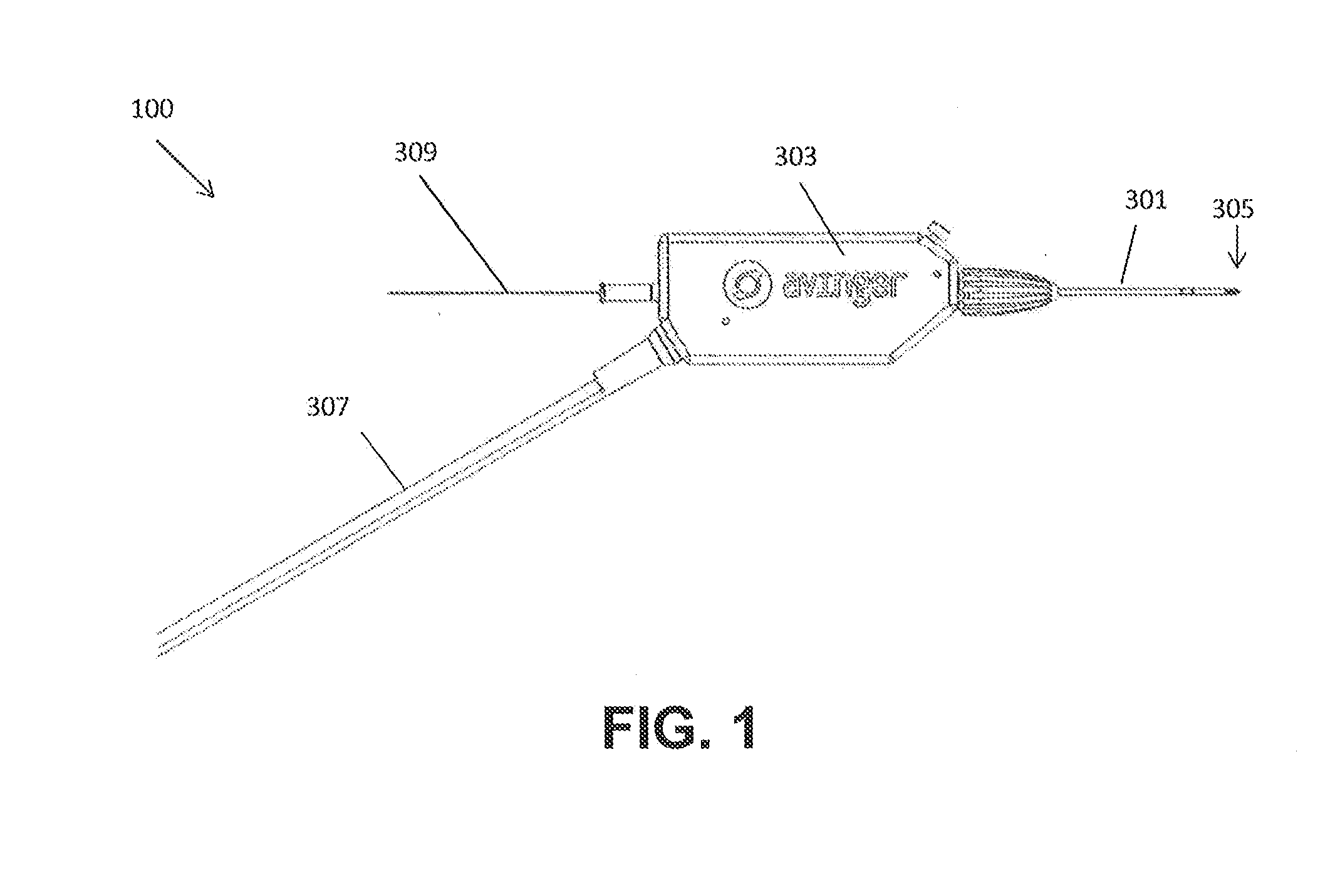Occlusion-crossing devices
a cross-section device and catheter technology, applied in the field of catheters, can solve the problems of affecting the blood circulation to the brain and heart, affecting the safety of patients, so as to enhance the flexibility of the catheter and facilitate construction.
- Summary
- Abstract
- Description
- Claims
- Application Information
AI Technical Summary
Benefits of technology
Problems solved by technology
Method used
Image
Examples
Embodiment Construction
[0053]Catheters, such as occlusion crossing catheters, including guidewire placement and / or support catheters (which may be referred to as “occlusion crossing catheters” for convenience) may be used to cross an occlusion or lesion. These catheters may be used to place a guidewire within an occluded lumen of a vessel. Any of the catheters described herein may include a guidewire lumen spanning all or most of the length of the device and a rotating and / or oscillating (clockwise and / or counterclockwise relative to the long axis of the catheter) distal tip.
[0054]The catheters described herein can be dimensioned to fit within vessels of the body, such as blood vessels. For example, the catheters can be configured to be placed within the peripheral blood vessels. Thus, the catheters can have an outer diameter of less than 0.1 inch, such as less than 0.09 inches, such as less than or equal to 0.08 inches.
[0055]In one embodiment, a catheter device includes a distal tip that is rotatable and...
PUM
 Login to View More
Login to View More Abstract
Description
Claims
Application Information
 Login to View More
Login to View More - R&D
- Intellectual Property
- Life Sciences
- Materials
- Tech Scout
- Unparalleled Data Quality
- Higher Quality Content
- 60% Fewer Hallucinations
Browse by: Latest US Patents, China's latest patents, Technical Efficacy Thesaurus, Application Domain, Technology Topic, Popular Technical Reports.
© 2025 PatSnap. All rights reserved.Legal|Privacy policy|Modern Slavery Act Transparency Statement|Sitemap|About US| Contact US: help@patsnap.com



